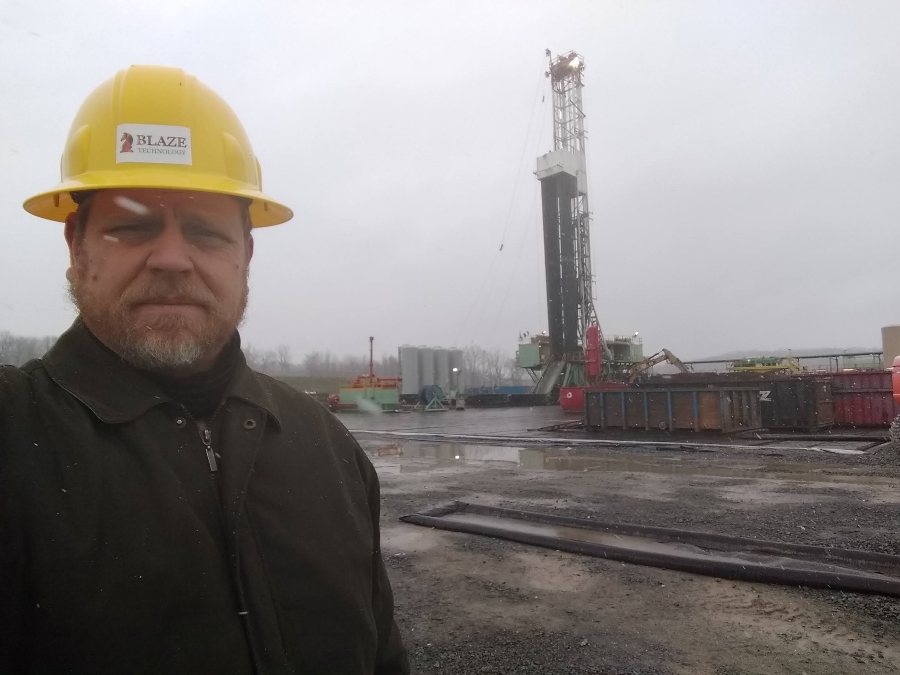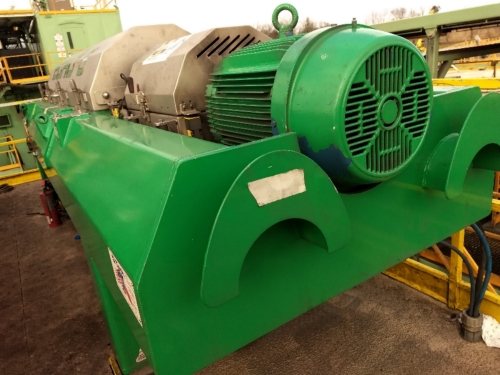Abstract
System integration and development require the implementation of various hardware components to act in concert to accomplish a particular task. In order for a system to act in concert, these components must be driven by a control device. Control devices are managed via software. The control devices that Blaze Technology uses are typically industrial controllers or computers. These controllers will have various inputs, for sensing and triggering, and outputs, for operating hardware.
When developing a system, Blaze Technology professionals will evaluate a requirement and determine the best possible outcome that helps the client not only achieve his/her/their goals, but also save them money in the long run as well as provide the ability for data analytics using a variety of solutions.
Introduction
There have been many times where a client has come to Blaze Technology with a system that has been developed by another company. One such client hired Blaze Technology to look at their specific problem and determine a path forward where their previous provider was unable. This client was looking for a scalable answer for a very big problem. The problem was that the client had different software solutions for each product that the client manufactured. This would normally be typical when a client has many different products; however, each of this client's products was a derivative of another. In other words, every system was based off of a generic construct. What's more is that, given the previous paradigm, if the client wanted another version of the system, a new software project needed to be created. Of course, one could copy a project over to the new project and make the appropriate modifications; but this requires time and effort. This may be advantageous for the provider considering they will get more money in the long run, but the client only makes marginal profit.
The Problem
The main problem for this client was that their previous solution provider declined supplying any more services to them. The client was in desperate need to develop the next evolution of a product; but because the system was much larger, it would require a complete rebuild given the current standard of operational practice. The current practice was:
- Build a system
- Sell systems
- Customer provides feedback on some improvements
- Copy the old system
- Make the modifications on the new project
- Sell upgraded systems
- Go to Step 3 and Repeat Process
The problem with this method is that each time an improvement was needed, the project had to be copied and updated. Recreating the project, performing updates, distributing, and deploying a system takes lots of time. This does not include the additional testing that needs to take place. Every time a system is updated, the entire system needed to be retested. Each deployment takes time and effort.
Every minute going towards development is a minute not in the field making the client or their client money. The system would require an upgrade to support this new task. Not only that, but each version needs to be cataloged. Just because an upgrade occurs does not mean that the upgrade will be propagated to all systems. Generally, in this field of operation, only the clients who pay for the upgrade will receive the upgrade. Clients that did not pay for the upgrade would retain the older version.
The Solution
Blaze Technology, LLC elicited the client for the requirements and found that the client had a base system from which all other systems derived. However, each version of the system had an additional element or additional elements to supplement the overall task. With that, Blaze Technology was able to develop a highly scalable, highly expansive, highly maintainable, and incredibly efficient system to cover all the client's products.
The previous solution for each product utilized a single Programmable Automation Controller (PAC); however, the controller configuration was not standardized across all the systems; nor was the programming. One system might have a PAC configured one way while another version may have a different PAC configuration and different software. As stated previously, this might be normal if the product line was vastly different. But this client's product line was derived from the same original system.
Blaze Technology's answer was to create one universal system from which the client could chose the product they were selling through a software configurator. Upon acceptance of the configuration, the software would auto construct the product.
This major capability upgrade required a big change in the control hardware. First, the PAC was replaced with a Schneider Electric Programmable Logic Controller (PLC). For this system to have maximum scalability, the PLC would have the same configuration across all the client's products. This would also aid with quick remove and replace capability for technicians in the field.
The choice to use Schneider Electric's Modicon TM251MESE PLC was due to its high performance, innovative design, and distributed architecture. Its compact size of 54 x 90 x 95 mm reduced the footprint of the space being utilized within the enclosure. TM3 expansion modules allowed the controller to have digital and analog inputs and outputs. Additional value adds to this controller are Run/Stop switch, an industrial SD memory card slot, and a QR code for direct access to its technical documentation. The TM251MESE controller has an embedded Ethernet port offering FTP Client/Server, Web Server, SQL Client, SNMP Client/Server V1 and V2, OPC UA Server, SNTP Client and DNS Client services, meaning the controller can easily be integrated in control system architectures for remote monitoring and maintenance of machines by means of applications for smartphones, tablets, and PCs. The plethora of embedded functions such as Modbus serial link, USB port dedicated to programming, Ethernet I/O Scanner, CANopen and SAE J1939 fieldbuses for distributed architectures and advanced position control functions (PLCopen libraries) allows this system to be high scalable. The Dual Core processor and 64 MB flash memory (128 MB memory size) of M251 controller is ideal for targeting larger more complex applications. The EcoStruxure Machine Expert programming software that is used to program the controller is highly intuitive and function packed, making it easy to create applications quickly.
Due to the entire system being so multifaceted, a need for more computing power and processing resources was required beyond the PAC and PLC. Thus, the second upgrade was to utilize Blaze Technology's BT310 series Fanless Industrial Computer. The BT310 has a quad core processor, large hard drive, and much more RAM, among other things, than the PAC. The BT310 has three separate ethernet connections, two USB 2.0, two USB 3.0, two RS232 communication ports, and two RS485 communication ports and can easily handle operating temperatures of -40C to 60C. By coupling the BT310 with a Schneider Electric PLC, the product possibilities for the client were effectively endless.
The software developed by Blaze Technology provided the capabilities of allowing the client to choose any of their configurations that were already on the market while also giving them the possibility for quick configuration of a new product, within their already defined architype. One caveat might be that the client would want or need a new user interface. Developing a user interface for this system would take a tiny fraction of the time it would take versus the amount of effort required if the client utilized their old methodology. The new system provided the client the ability to have the software ready well before the system was even assembled.
The PLC and BT310 combination saved the client money in the short run as well as in the long run. The PLC and Industrial Computer combination was less expensive than the PAC. The package offered the advantage of storing the data on a second hard drive while also sending data to a cloud, as needed. It also provided the additional capability of logging events and errors as well as monitoring operating system, security, and network status. With the given solution, the client can troubleshoot the system from many aspects.
The final and most vital piece of this project that made this system so highly scalable and extremely reliable was the use of Object-Oriented Development (OOD). The BT310 Industrial Computer was programmed using National Instrument's LabVIEW. LabVIEW is an extremely powerful graphical Integrated Development Environment (IDE) that has a vast level of capability for industrial automation. By utilizing LabVIEW's Object-Oriented Programming, components were treated as objects. Each of these objects could be easily dynamically replicated (programmatically), commanded, and manipulated as needed. The configurator program that the client uses to set the system up effectively designs the entire system, from initialization to operation. Once configured, the system can be deployed for immediate assembly and usage.
Conclusion
Blaze Technology develops many different systems, large and small, across many different industries. The client discussed above is like many of our clients. They have a vision; they just don't know how to accomplish it. This is where Blaze Technology steps in. Blaze Technology analyzes the situation and, through its various partners, provides the highest quality solutions that fits exactly what the client is trying to accomplish. The client described here only needed one solution. This solution needed to be extremely scalable, easily modifiable, have a high regard of maintainability, and ultimately required a high level of reliability. Blaze Technology was able to provide all of these and more saving the client time and money, but also increasing the client's credibility in their space.

